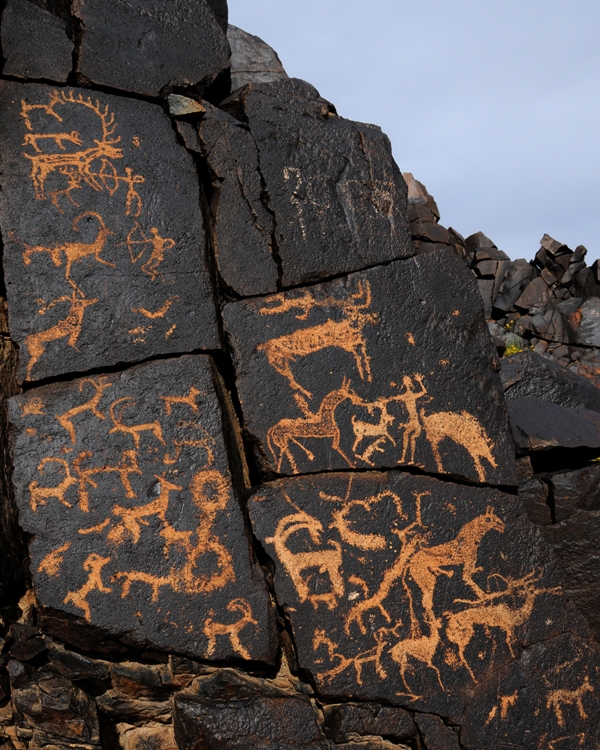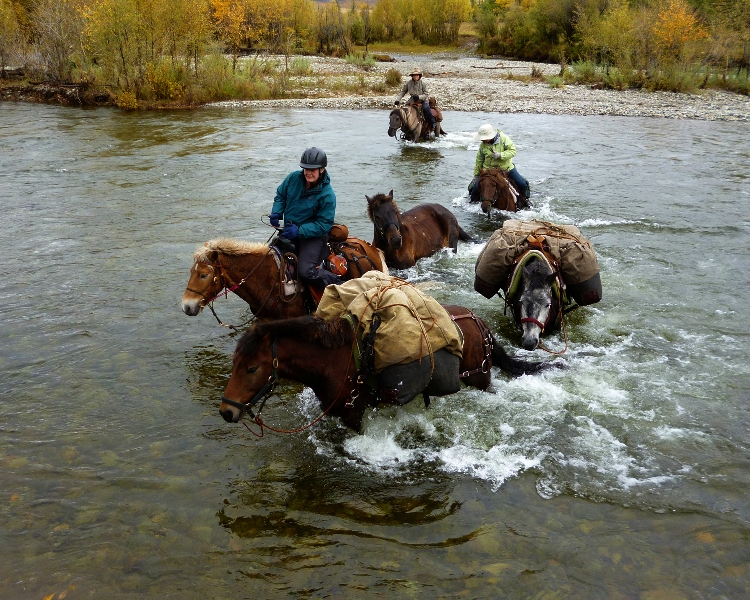No products in the cart.
Riding a Horse in Mongolia
Dreams of Riding a Horse in Mongolia
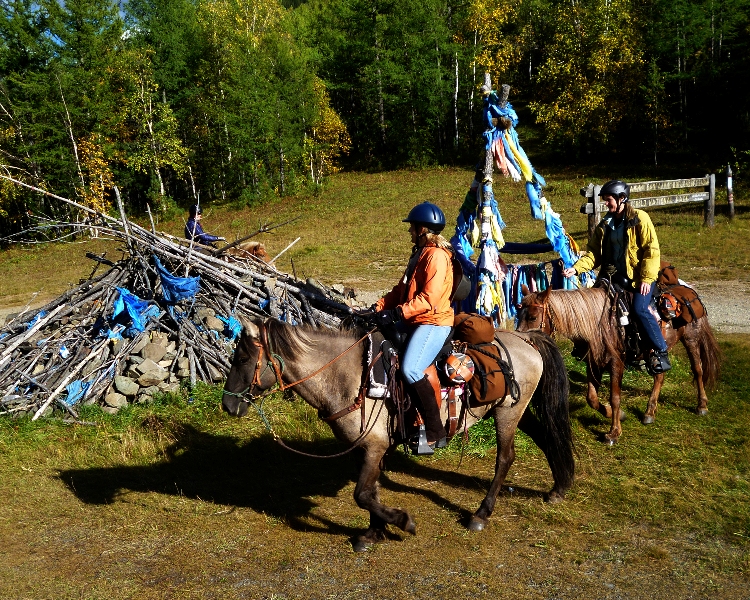
Many people dream about riding a horse in Mongolia – of galopping across the steppes, exploring the wilderness, learning about the culture and history. Having worked in the country for many years and especially in the country side with local communities, we have a fair knowledge of real life there. But while we have something like roots in Mongolia after all these years, with many friends and colleagues and close ties to families and are very happy to share our knowledge and experiences, it is not up to us to present the country, its culture and traditions. To learn about these, we bring our guests there and let them meet with people first hand; and of course, our Mongolian team members will happily share with you their views and knowledge. Most of them have grown up in the Mongolian country side and come from herder families.
Mongolian Herders facing Enormous Changes and Challenges
The country has undergone enormous changes since 1990 and still continues to do so. The practice of nomadic livestock herding is probably the most well known aspect about Mongolia and often used to romanticize rural life there and as an attraction for visitors. And yes, it is intriguing, interesting and alive. But for the herders of Mongolia, while it is their identity, livelihood and freedom, it is hardly romantic most of the time . It is a hard life, faced with ever growing challenges. Many herders want their children to pursue a different life.
Grassland Ecology and Nomadic Livestock Husbandry
Nomadic livestock herding is often misunderstood as a random wandering and destructive to grasslands. Yet, it is rooted in ecological necessity and in fact a key to manage arid grasslands in a sustainable manner – by maintaining frequent moves in summer time and undertaking seasonal migrations, the grasslands benefit from grazing and have time to recover when not grazed. Also, in dry land ecosystems, grassland condition is dependent mainly on – rainfall. This is what nomadic peoples everywhere have known for millennia and they have developed their livestock herding systems based on this. Science has recognized this in the last decades and the role of nomadic peoples in the preservation of grasslands is being acknowledged more now. This is why we have worked with herder communities in nature conservation and grasslands protection for many years, and this is where much of our knowledge and connections come from.
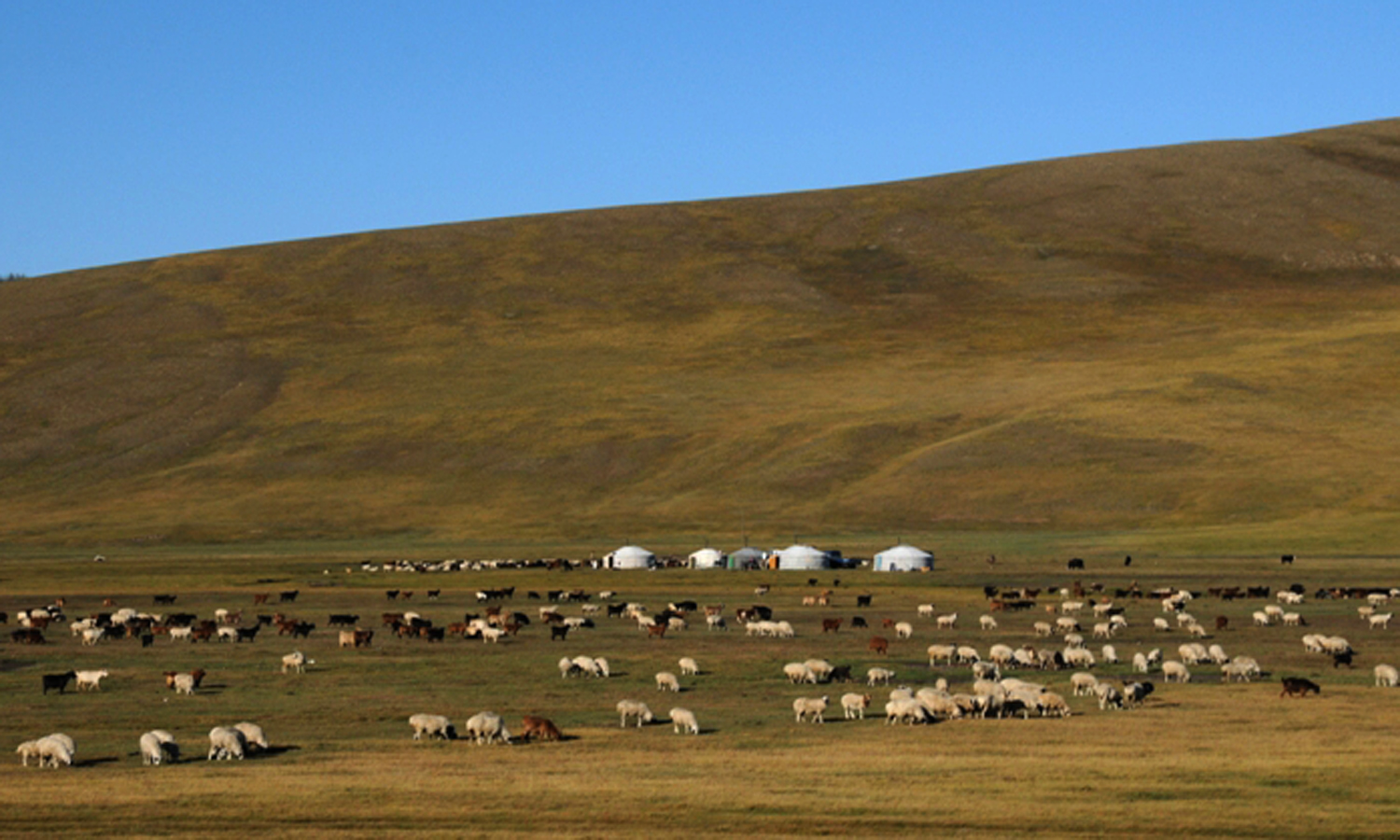
Climate Change in Mongolia
Nomadic pastoralism is an intricate management system. Imagine managing 5 types of livestock, assessing and predicting pasture condition, planning and undertaking moves, and – preparing for and surviving a harsh winter that in cyclical fashion, comes with severe storms and snowfall that even the hardiest animals cannot survive. This is the reality of herding in Mongolia. Add to that the socio-economic and political changes that the country has undergone since 1990, when with the transformation to a market economy, most of the markets were lost and infrastructure and services for rural communities declined dramatically. Moreover, climate change is having a significant impact in Mongolia; water sources are dwindling and changing weather patterns are a serious concern for livestock productivity.
Mining in Mongolia
While the government has instituted large programs in support of the national livestock husbandry, the country’s recent development is marked by a rapid expansion of mining industries. Mongolia is very rich in mineral resources, copper, gold, coal, and other sought after minerals. This wealth of the country is a double edged sword, with a potential for development and prosperity, but also for severe environmental and social impacts. The country is a text book example of a “resource curse” – where large multinational companies rush into the country for profit. Large investments and loans flood into the country, the latter of which may turn out a huge burden once the mineral wealth has been exploited and the aftermath of gigantic mining operations require expensive environmental management to contain damage. The attempts of national leaders and concerned citizens to leverage optimum benefits for their country from the exploitation of its own resources is often referred to negatively as “resource nationalism” in international media. And in more and more local areas, pasture lands are under threat when licenses for mining exploration and exploitation are issued.
Modern Technology and Old Traditions in Mongolia
These are the real challenges of the country and of Mongolia’s herders today. In this scenario, they are displaying unbelievable resilience. Practicing livestock herding whileadapting and developing it as necessary to a changing climate, new markets and technologies is quite a challenge. For herders in remote areas, communication and access to information has always been a prime need., With proper information, people adopt new technologies fast. Household use of solar energy per capita in the steppes of Mongolia is probably among the highest anywhere in the world. A solar panel, satellite dish, TV set, battery and charger for small devices, is a very common feature of herders’ gers in Mongolia. Small wind generators are also not uncommon. Such technologies expanded rapidly and with government support. The same goes for mobile phone service, a very important technology that rural communities embraced rapidly. Herders in Mongolia, as with most of the population are fairly well educated, with at least high school diploma.General education and a high literacy rate are a legacy of socialism, just as are the education and the strong participation of woman in public life, economic activities and of course in community life.
Travel by Camel in the Gobi Desert
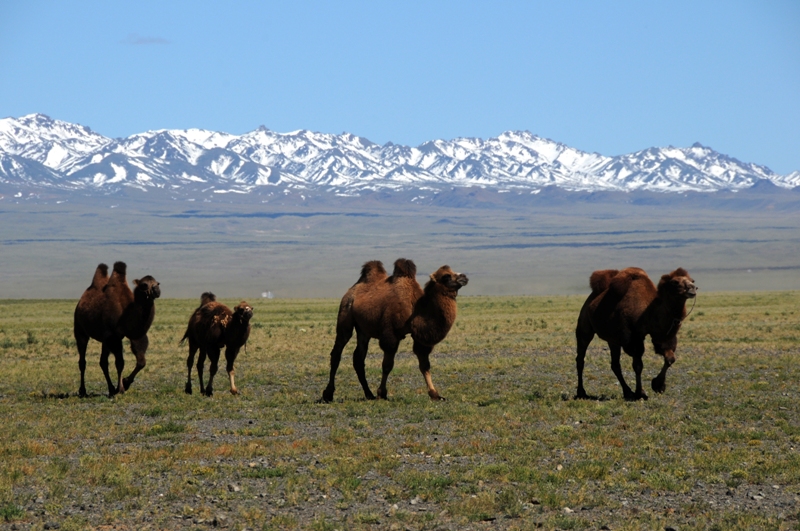
Every herder family has close ties to relatives in the city, and many have a student going to school there. There is frequent travel to and from the capital city and trading across borders. In the Gobi, this is very common. Trading caravans don’t use camels anymore though.Modern trading is by 4 wheel drives vehicles or by train – the Southern route of the Trans-Siberian railway that travels from Ulaanbaatar to Beijing through the Gobi desert-. However, on a tour through the Gobi you are likely to still come across people riding camels, looking for their own camel herd in the wide expanses of the desert, or moving with pack camels and carrying their belongings, including a dismantled ger to another campsite. This of course is a great sight and an age old practice. Camels are an important means to maintain the nomadic way of life. But don’t be surprised if the camel rider is on a cell phone, –she may be tweeting- if in range of one of the telecommunications services that have extended their coverage in rural Mongolia in the past decade.
A Country of Great Wealth and Great Contrasts
Mongolia is a country of great contrast but rapidly changing. It has enormous wealth, not only of minerals, but of the last large grassland expanses of great biodiversity and wilderness, of great cultural landscapes where they have been designated as World Cultural Heritage Sites that hold the cradle of nomadic civilization.These areas are still alive with the practice of nomadic livestock herding.
The great steppes of Mongolia, the Gobi desert, the wilderness areas of the northern forest , such as the Khan Khentii mountain ranges still remain in their grandeur, just as the idea of riding a horse in Mongolia is the imagination of many. Even well traveled people and former Presidents of the United States, cultivate it. On a recent Colbert Report, Bill Clinton shared with the world (or rather – Colbert Nation) that this is still one of the points on his bucket list.
Traveling to Mongolia

“Mongolia” still has the connotation of far flung and very remote. At the bank the other day, here in Oregon, the teller explained a service to me and illustrating how easily accessible it is she said: “You don’t need to go all the way to “Outer Mongolia”. I mentioned that I go there all the time, and I realized that “Mongolia” is still synonymous for many people with remoteness and wilderness. Well, rightly so if you are looking to spend a holiday, whether on horseback, camel back, hiking or a cross-country tour, to experience remoteness, wilderness and tranquility . However, getting there has become easy and does not take that long. Compare the real time travel to that of a coast to coast flight in the US, and you are surprised that you can be in Tokyo, Beijing or Seoul in about 10 hours from the US West coast, with another 3 hours’ flight taking you to Ulaanbaatar, the capital of Mongolia. From Europe, access is even faster, flying directly to Ulaanbaatar via Moscow, or taking the route through Beijing to Mongolia’s capital city. Which, with its modern high rises, traffic and coffee shops, will not reflect the old image of Mongolia. Yet, an hour’s drive from the city, you can find what you have imagined of rural life, stay with a herder’s family, and set out for a riding adventure into some of the premier parks of the country.
Adventure Travelers in Mongolia
Conversations with our guests, who come from all walks of life for a riding holiday in Mongolia, tell us that adventure travelers today want truly authentic experiences. They don’t want a preconceived and distorted picture, but rather want to see a country how it really is and meet and interact with the people to understand their life and concerns. That is the real adventure after all, and that is how travel can support understanding, worldwide.
We thrive to make such adventures possible at Stone Horse Expeditions & Travel.
